
Yellow-bellied Sapsucker, Ryan Schain.
Continental Summary
Moderate and heavy flights were the norm this week for many areas of the country, featuring Greater White-fronted Goose, Ring-necked Duck, Say’s Phoebe, Varied Thrush, Yellow-rumped Warbler, Fox Sparrow, and Golden-crowned Sparrow in the West and American Bittern, Northern Flicker, Eastern Phoebe, Ruby-crowned Kinglet, Nashville Warbler, Yellow-rumped Warbler, Palm Warbler, Rose-breasted Grosbeak, and White-crowned Sparrow in the East.
Want to know what species will be on the move this week? Visit our forecast for this week.
Need a review of our definitions for regions, species on the move, and migration amounts? Please visit this link.
Quick Links to Regions
Upper Midwest and Northeast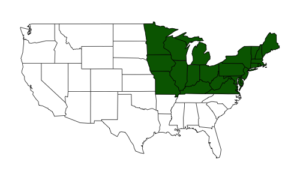 |
Gulf Coast and Southeast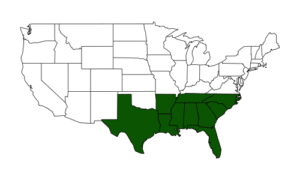 |
Great Plains |
West |
Upper Midwest and Northeast
Low pressure and associated precipitation in the vicinity of the Great Lakes brought mostly unfavorable conditions to the region to start the period. But with its passage heavy migration followed, first to the west of the Appalachians on Saturday then east of the Appalachians on Sunday. Moderate to locally heavy flights continued for the remainder of the period, scattered across the region. Particularly active were areas of the eastern Great Lakes and New England, as strong high pressure to the north in Canada brought northeasterly winds.
Top Movers
Increasing
| Species | Increase from Last Week | % of Checklists Reporting |
|---|---|---|
| White-throated Sparrow | 112% | 9 |
| Yellow-rumped Warbler | 83% | 14.8 |
| Yellow-bellied Sapsucker | 140% | 6.9 |
| Ruby-crowned Kinglet | 82% | 6.3 |
| Palm Warbler | 55% | 11.5 |
| Blue-headed Vireo | 65% | 6.1 |
| Lincoln's Sparrow | 55% | 3.9 |
| Dark-eyed Junco | 71% | 3 |
| Swamp Sparrow | 35% | 5.6 |
| Orange-crowned Warbler | 76% | 1.3 |
| Savannah Sparrow | 33% | 5.6 |
| White-crowned Sparrow | 155% | 0.6 |
| Eastern Phoebe | 20% | 26 |
| Dunlin | 165% | 0.9 |
| Gray-cheeked Thrush | 52% | 2.9 |
| Ruddy Duck | 79% | 1.1 |
| Winter Wren | 63% | 1.3 |
| American Pipit | 51% | 1.2 |
| Hermit Thrush | 57% | 1.7 |
| Sharp-shinned Hawk | 17% | 8 |
| Rusty Blackbird | 87% | 0.5 |
| Northern Flicker | 11% | 39.4 |
Decreasing
| Species | Decrease from Last Week | % of Checklists Reporting |
|---|---|---|
| Warbling Vireo | -62% | 1.9 |
| Great Crested Flycatcher | -76% | 0.6 |
| Blue-gray Gnatcatcher | -54% | 2.2 |
| Veery | -58% | 1.2 |
| Baltimore Oriole | -67% | 0.9 |
| Canada Warbler | -69% | 0.5 |
| Prairie Warbler | -61% | 0.8 |
| Barn Swallow | -52% | 2.6 |
| Ruby-throated Hummingbird | -29% | 14.8 |
| Eastern Kingbird | -75% | 0.5 |
| Chestnut-sided Warbler | -33% | 5.3 |
| Bobolink | -41% | 1.9 |
| Least Sandpiper | -34% | 3.5 |
| Yellow Warbler | -50% | 1.8 |
| Eastern Wood-Pewee | -23% | 13.2 |
| Blue-winged Warbler | -56% | 0.4 |
| Blackburnian Warbler | -32% | 2.4 |
| Green Heron | -22% | 4.6 |
| Semipalmated Plover | -31% | 3.2 |
| Chimney Swift | -23% | 12.9 |
| White-eyed Vireo | -28% | 3.7 |
| American Redstart | -21% | 17.7 |
| Golden-winged Warbler | -41% | 0.6 |
| Least Flycatcher | -29% | 1.8 |
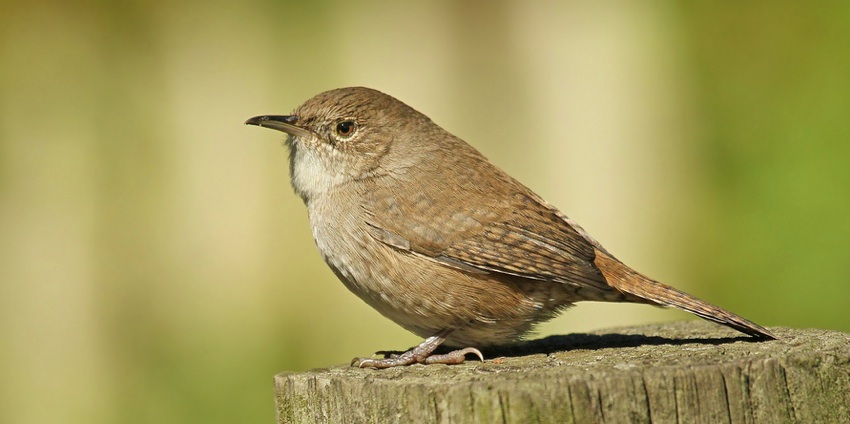
House Wren, Ryan Schain.
Gulf Coast and Southeast
A weekend of primarily light to moderate flights kicked off the period for the region, with some locally heavier flights in the southern Appalachians and coastal bend of Georgia and Florida. A similar pattern continued for many areas close to the immediate Gulf of Mexico coast and through portions of the southeastern Appalachians and coastal plain through mid week. However, a disturbance moving ashore quieted flights substantial to end the period, with primarily light to moderate flights occurring west of the Appalachians and Mississippi River.
Top Movers
Increasing
| Species | Increase from Last Week | % of Checklists Reporting |
|---|---|---|
| Rose-breasted Grosbeak | 93% | 5.2 |
| Swainson's Thrush | 83% | 6.7 |
| Palm Warbler | 47% | 4.6 |
| Ruby-crowned Kinglet | 117% | 1.6 |
| Nashville Warbler | 83% | 5.2 |
| Gray Catbird | 29% | 14.6 |
| Wood Thrush | 53% | 3.1 |
| Common Yellowthroat | 26% | 17.1 |
| House Wren | 46% | 2.8 |
| Bay-breasted Warbler | 57% | 1.4 |
| Merlin | 34% | 2.5 |
| Scarlet Tanager | 25% | 6.8 |
| Philadelphia Vireo | 45% | 1.6 |
| Orange-crowned Warbler | 93% | 0.8 |
| American Kestrel | 23% | 5.3 |
| Peregrine Falcon | 44% | 1.4 |
| Northern Harrier | 40% | 1.7 |
| Gray-cheeked Thrush | 46% | 1 |
| Northern Flicker | 16% | 8.9 |
| Savannah Sparrow | 79% | 0.4 |
| Brown Thrasher | 11% | 17.1 |
| Lesser Goldfinch | 30% | 5.1 |
| Magnolia Warbler | 10% | 9.6 |
Decreasing
| Species | Decrease from Last Week | % of Checklists Reporting |
|---|---|---|
| Common Nighthawk | -50% | 1 |
| Eastern Kingbird | -41% | 3.4 |
| Buff-breasted Sandpiper | -63% | 0.4 |
| Great Crested Flycatcher | -32% | 4.8 |
| Kentucky Warbler | -64% | 0.3 |
| Prothonotary Warbler | -42% | 0.9 |
| Louisiana Waterthrush | -70% | 0.2 |
| Bell's Vireo | -88% | 0 |
| Canada Warbler | -41% | 0.8 |
| Baltimore Oriole | -24% | 5.9 |
| Blackburnian Warbler | -32% | 2.7 |
| Bank Swallow | -40% | 0.8 |
| Semipalmated Sandpiper | -31% | 1.4 |
| Least Tern | -79% | 0.1 |
| Olive-sided Flycatcher | -44% | 0.6 |
| Blue-winged Warbler | -35% | 1.4 |
| Northern Parula | -30% | 10.8 |
| Upland Sandpiper | -51% | 0.1 |
| Red-eyed Vireo | -22% | 14.5 |
| Purple Martin | -31% | 1.6 |
| Barn Swallow | -14% | 8.8 |
| Semipalmated Plover | -19% | 3.2 |
| Least Flycatcher | -27% | 2 |
| Mississippi Kite | -41% | 0.8 |
| Black-and-white Warbler | -23% | 10.1 |
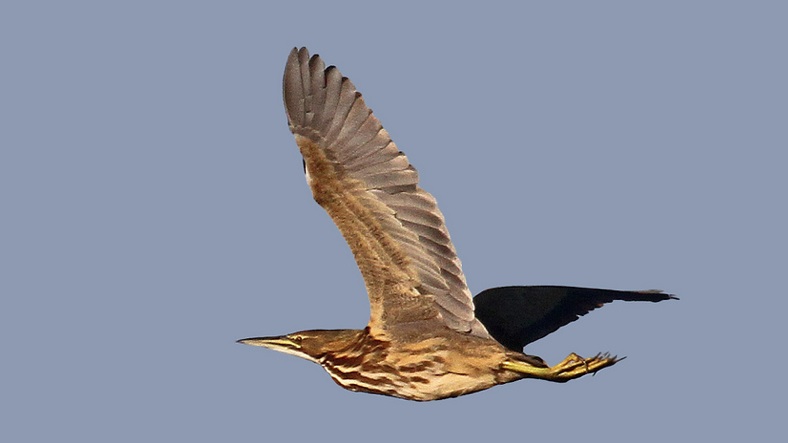
American Bittern, Ryan Schain.
Great Plains
An active start for the southern Plains featured a pulse of heavy movements on Friday night, but this intensity diminished quickly – Saturday saw almost all of the region’s flights localized and limited to light to moderate intensity. Changes were in the air by Monday night, as a new pulse of heavy flights was apparent in the northern and central Plains. But these, too, were reasonably short-lived: precipitation, some of which was intense, moving across the region kept flights localized, though to a slightly lesser extent than the weekend, and limited to light to moderate intensities for the remainder of the period.
Top Movers
Increasing
| Species | Increase from Last Week | % of Checklists Reporting |
|---|---|---|
| Orange-crowned Warbler | 98% | 18.5 |
| Spotted Towhee | 117% | 7.1 |
| Yellow-rumped Warbler | 60% | 18.6 |
| White-crowned Sparrow | 72% | 5 |
| American Bittern | 577% | 2 |
| Dark-eyed Junco | 68% | 5 |
| Ruby-crowned Kinglet | 38% | 13.8 |
| Fox Sparrow | 484% | 1.3 |
| White-throated Sparrow | 43% | 7 |
| Lincoln's Sparrow | 37% | 10.3 |
| Northern Flicker | 30% | 48.7 |
| Purple Finch | 768% | 1.3 |
| Common Grackle | 48% | 17.9 |
| Swamp Sparrow | 85% | 2.4 |
| Eastern Meadowlark | 55% | 5.7 |
| Townsend's Solitaire | 133% | 1.3 |
| Harris's Sparrow | 154% | 1 |
| Eastern Bluebird | 22% | 23.1 |
| Nashville Warbler | 20% | 15.2 |
| American Crow | 13% | 37.3 |
| Eastern Phoebe | 15% | 17.2 |
Decreasing
| Species | Decrease from Last Week | % of Checklists Reporting |
|---|---|---|
| Magnolia Warbler | -98% | 0 |
| Baltimore Oriole | -90% | 0.3 |
| Least Flycatcher | -72% | 1.6 |
| Eastern Kingbird | -96% | 0.2 |
| Warbling Vireo | -61% | 2.9 |
| American Redstart | -65% | 1.7 |
| Olive-sided Flycatcher | -97% | 0 |
| Great Crested Flycatcher | -68% | 1.2 |
| Yellow-throated Vireo | -74% | 0.5 |
| Yellow Warbler | -52% | 3.2 |
| Black Tern | -70% | 0.8 |
| Wilson's Warbler | -47% | 4.2 |
| Ruby-throated Hummingbird | -43% | 9.6 |
| Eastern Wood-Pewee | -46% | 4.3 |
| Spotted Sandpiper | -60% | 1.6 |
| Blue-gray Gnatcatcher | -53% | 2.5 |
| Bank Swallow | -66% | 0.7 |
| Bell's Vireo | -91% | 0.1 |
| Wilson's Phalarope | -75% | 0.4 |
| Barn Swallow | -28% | 15.8 |
| Mississippi Kite | -59% | 0.9 |
| Black-and-white Warbler | -40% | 2.3 |
| Upland Sandpiper | -69% | 0.4 |
| Red-eyed Vireo | -27% | 6.9 |
| Semipalmated Sandpiper | -61% | 0.7 |
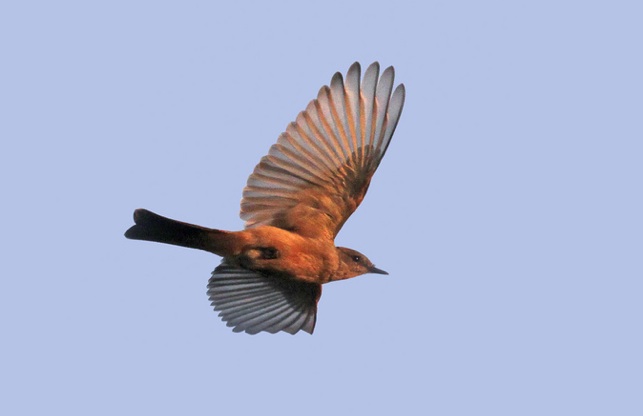
Say’s Phoebe, Ryan Schain.
West
Moderate flights kicked off the weekend in the Pacific Northwest, Central Valley, and Desert Southwest. The northern portion of the region continued to experience such flights on Monday night, with this pulses connected with the flights occurring in the northern Plains. After a brief respite in the action on Tuesday, when primarily light movements were scattered across the region, another light to moderate pulse came to the Desert Southwest on Wednesday and Thursday nights. Some of these movements, particularly in the southern Rockies, were locally heavy.
Top Movers
Increasing
| Species | Increase from Last Week | % of Checklists Reporting |
|---|---|---|
| Golden-crowned Sparrow | 102% | 10.2 |
| Varied Thrush | 277% | 2 |
| Yellow-rumped Warbler | 46% | 23.8 |
| Fox Sparrow | 61% | 5.3 |
| White-crowned Sparrow | 34% | 29.3 |
| Ruby-crowned Kinglet | 38% | 9.6 |
| Greater White-fronted Goose | 87% | 2.4 |
| Lincoln's Sparrow | 32% | 9 |
| Cackling Goose | 84% | 1.7 |
| Spotted Towhee | 16% | 19.4 |
| Townsend's Warbler | 19% | 8 |
| American Pipit | 35% | 4.5 |
| Dark-eyed Junco | 21% | 17.9 |
| Eared Grebe | 15% | 7 |
| Northern Flicker | 12% | 29.7 |
| American Coot | 13% | 17.5 |
| American Golden-Plover | 103% | 0.5 |
| Say's Phoebe | 13% | 10.2 |
| Black-bellied Plover | 17% | 4.2 |
| American Wigeon | 16% | 6.4 |
| Hermit Thrush | 20% | 3.1 |
| Ring-necked Duck | 23% | 2.3 |
Decreasing
| Species | Decrease from Last Week | % of Checklists Reporting |
|---|---|---|
| Gray Catbird | -45% | 0.8 |
| Western Wood-Pewee | -40% | 2.8 |
| Red-necked Phalarope | -41% | 2.3 |
| Violet-green Swallow | -48% | 3.3 |
| Lazuli Bunting | -37% | 1.3 |
| Bobolink | -78% | 0.1 |
| Caspian Tern | -35% | 2.6 |
| Black-headed Grosbeak | -36% | 1.6 |
| Barn Swallow | -26% | 13.9 |
| Black-chinned Hummingbird | -32% | 2.4 |
| Rufous Hummingbird | -41% | 1 |
| Common Nighthawk | -62% | 0.2 |
| MacGillivray's Warbler | -25% | 2.3 |
| Vaux's Swift | -41% | 2.6 |
| Warbling Vireo | -20% | 5.2 |
| Wilson's Warbler | -20% | 12 |
| Western Kingbird | -39% | 1.1 |
| Western Tanager | -17% | 8.3 |
| Cliff Swallow | -48% | 0.6 |
| Painted Redstart | -43% | 0.3 |
| Blue Grosbeak | -27% | 1.5 |
–––––––––––––––––––––––––––––––––––
Farnsworth and Van Doren




